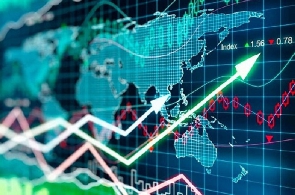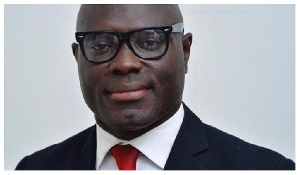Market observers are hopeful of moderate growth at end-2023 fiscal year, driven by limited policy interventions in both fiscal and monetary aspects.
Despite a promising recovery in Ghana’s economic performance for half-year 2023 (HY23), propelled by robust growth in the service and agriculture sectors, Databank – an asset management company – is projecting growth to moderate at around 2.4 percent for FY23, citing limited policy interventions.
“We revise our FY23 forecast downward to 2.4 percent ± 50bps as limited policy interventions due to fiscal consolidation will likely moderate growth, though a recovering business environment should be positive for growth,” it said.
“Limited policy action risks curbing economic growth. Under the IMF ECF, government pursued fiscal consolidation, controlling expenditures and boosting revenue efforts. We anticipate such spending constraints to temper economic growth,” stated Databank in its review of the macroeconomy and outlook.
Apakan Securities, an investment advisory firm, noted in its outlook that sustained recovery will lift the annual growth rate above government’s revised growth target – acknowledging potential obstacles from tightening fiscal and monetary conditions.
“A sustained recovery will lift the annual growth rate above government’s revised growth target of 1.5 percent for 2023, as evidenced by the average quarterly growth rate for the first two quarters at 3.3 percent. Nonetheless, we still expect tightening fiscal and monetary conditions to hamper growth prospects,” commented Apakan, highlighting the pass-through effects on household consumption and capital investment.
It is expected that the rebounding business environment will positively impact economic growth, supported by high-frequency data from the BoG’s business confidence and consumer confidence indices. Easing price pressures may bolster consumer demand, especially in the trade and household goods sub-sector.
The Bank of Ghana’s Real Composite Index of Economic Activity (CIEA) shows a recovering economy, narrowing its negative growth to 2.8 percent y/y in Jul-23 from a negative 3.1 percent in June-23. The Purchasing Managers’ Index (PMI) stood at 50.5 points in Sept-23, above the 50-point threshold and exhibiting a positive trend since Jan-23.
Moreover, the PMI has remained above the 50-point threshold since Feb-23 despite a slight decrease from 51.9 points in August 2023.
The improvement in high-frequency indicators is partly attributed to relative cedi stability anchoring supply costs and benefitting businesses. Easing price pressures also support consumer demand, as indicated by the PMI’s above-threshold trend since Feb-23.
“We perceive scope for recoveries in the industrial sector as cost pressures continually ease, with the Producer Price Index (PPI) cooling from 52.6 percent in Jan-23 to 25.1 percent in Sep-23,” commented Databank.
The economy exhibited promising recovery, driven by robust performances in the services and agricultural sectors. Real GDP growth recorded 3.2 percent y/y in Q2-23, compared to a revised growth of 3.3 percent in Q1-23. Real GDP growth also averaged 3.25 percent for H1-23, exceeding the FY23 target of 1.5 percent.
Robust growth of the services and agricultural sectors propelled the encouraging economic recovery, while the industry sector experienced a contraction – negatively impacting Ghana’s GDP growth. Q2-23 growth for the agricultural and services sectors was 6.0 percent and 6.3 percent respectively, while the industry sector contracted for the third consecutive quarter; registering a decline of 1.9 percent y/y. Non-oil GDP growth declined to 3.2 percent from 4.4 percent in Q1-23.
The International Monetary Fund (IMF) in its recent post suggested that China’s slowing economy will hit sub-Saharan Africa’s growth, as the Asian country’s economic engagement with the region is evolving – with implications for growth, trade and investments.
China has forged deep economic ties with countries in sub-Saharan Africa over the past 20 years, making it the region’s largest single-country trading partner. China buys one-fifth of the region’s exports – metals, minerals and fuel -and provides most of the manufactured goods and machinery imported by African countries.
“However, China’s recovery from the pandemic has slowed recently – due to a property downturn and flagging demand for its manufactured goods as global growth has also slowed,” the IMF analysis stated.
“This matters for Africa,” it stated.
A one percentage point decline in China’s growth rate could reduce average growth in the region by about 0.25 percentage points within a year, according to the latest Regional Economic Outlook.
Watch the latest edition of BizTech below:
Business News of Friday, 10 November 2023
Source: thebftonline.com

















